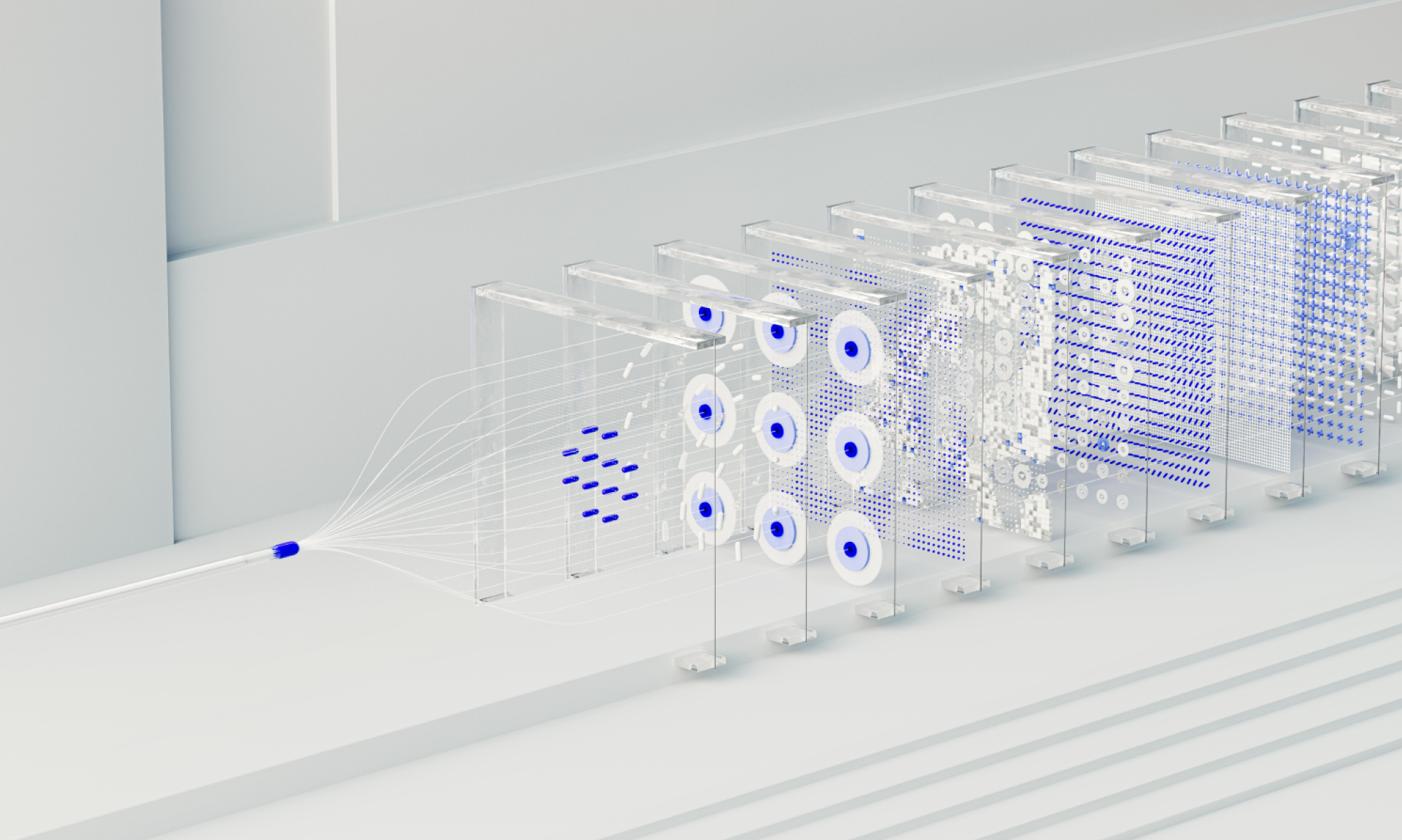AI
our blog
10 Strategies for Effective Digital Product Design

Overview
This article addresses the critical challenge of digital product design by outlining effective strategies that enhance user satisfaction and product functionality. It emphasizes the importance of user research, iterative prototyping, and collaboration among teams—practices that are essential for achieving superior design outcomes and fostering increased client success. Furthermore, these strategies not only improve the design process but also contribute to a more engaged user base, ultimately reinforcing the product's market position. By implementing these approaches, teams can ensure that their designs are not only functional but also resonate with users, leading to greater overall satisfaction.
Introduction
In a rapidly evolving digital landscape, the success of a product hinges not only on its functionality but also on its design. Effective digital product design is a multifaceted endeavor that combines user research, prototyping, and collaboration to create solutions that resonate with audiences. However, with numerous strategies available, how can designers ensure they are choosing the right approach to meet user needs and drive engagement? This article explores ten essential strategies that can elevate digital product design, offering insights into best practices that enhance both user satisfaction and business outcomes.
Studio Graphene's Agile Approach: Streamlining Digital Product Design
Studio Graphene employs an agile methodology that emphasizes flexibility and iterative progress. This approach not only enhances project outcomes but also fosters effective client communication, establishing a strong foundation for successful collaborations. By allowing teams to adapt quickly to feedback and changing requirements, the final product aligns closely with client expectations. Breaking projects into manageable sprints enables the agency to deliver incremental updates, facilitating continuous improvement and a faster time-to-market. Furthermore, regular check-ins and updates during these sprints ensure that clients remain engaged and informed throughout the development process, reinforcing a collaborative partnership.
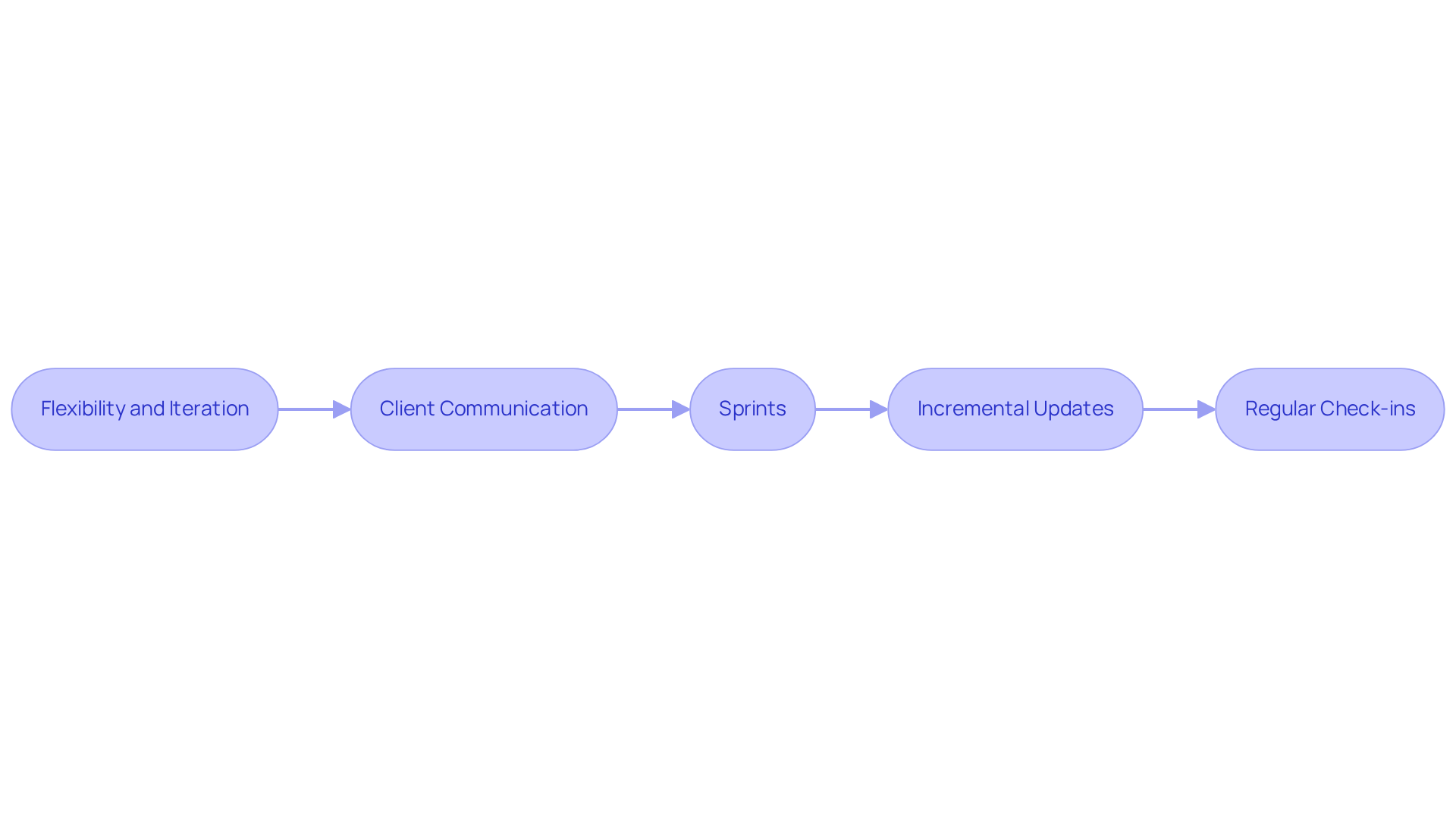
User Research: Understanding Your Audience's Needs
Conducting comprehensive audience research is essential for identifying the needs, preferences, and challenges of your target group in digital product design. Employing methods such as surveys, interviews, and usability testing in digital product design provides invaluable insights that inform creative decisions. By understanding the motivations of individuals, Studio Graphene can implement digital product design that not only meets functional requirements but also enhances user satisfaction.
For example, in our collaboration with Alchemy Wings, we designed and implemented a customer-facing mobile app alongside a mobile-responsive web platform. This platform showcased a straightforward and intuitive UI, which is an essential aspect of digital product design, facilitating a seamless ordering process. Additionally, it included an admin portal for in-depth access to sales data and a delivery validation system for individual drivers, underscoring our commitment to digital product design.
Positive feedback from clients highlights the agency's dedication to quality and effectiveness in digital product design, reinforcing the importance of prioritizing research on clients. Notably, over 50% of innovation in digital product design is driven by customer perspectives, illustrating the crucial role of consumer insights in the development of products. Furthermore, remote participant testing in digital product design allows for engagement with diverse populations, further enriching the research process.
As Ralf Speth aptly stated, 'If you believe quality creation is costly, you ought to consider the expense of poor creation,' emphasizing the necessity of investing in audience research for effective digital product design to avoid costly creative missteps. Moreover, utilizing technologies such as React.js, Node.js, and AWS services in our digital product design projects significantly enhances the overall effectiveness and scalability of the solutions we deliver.
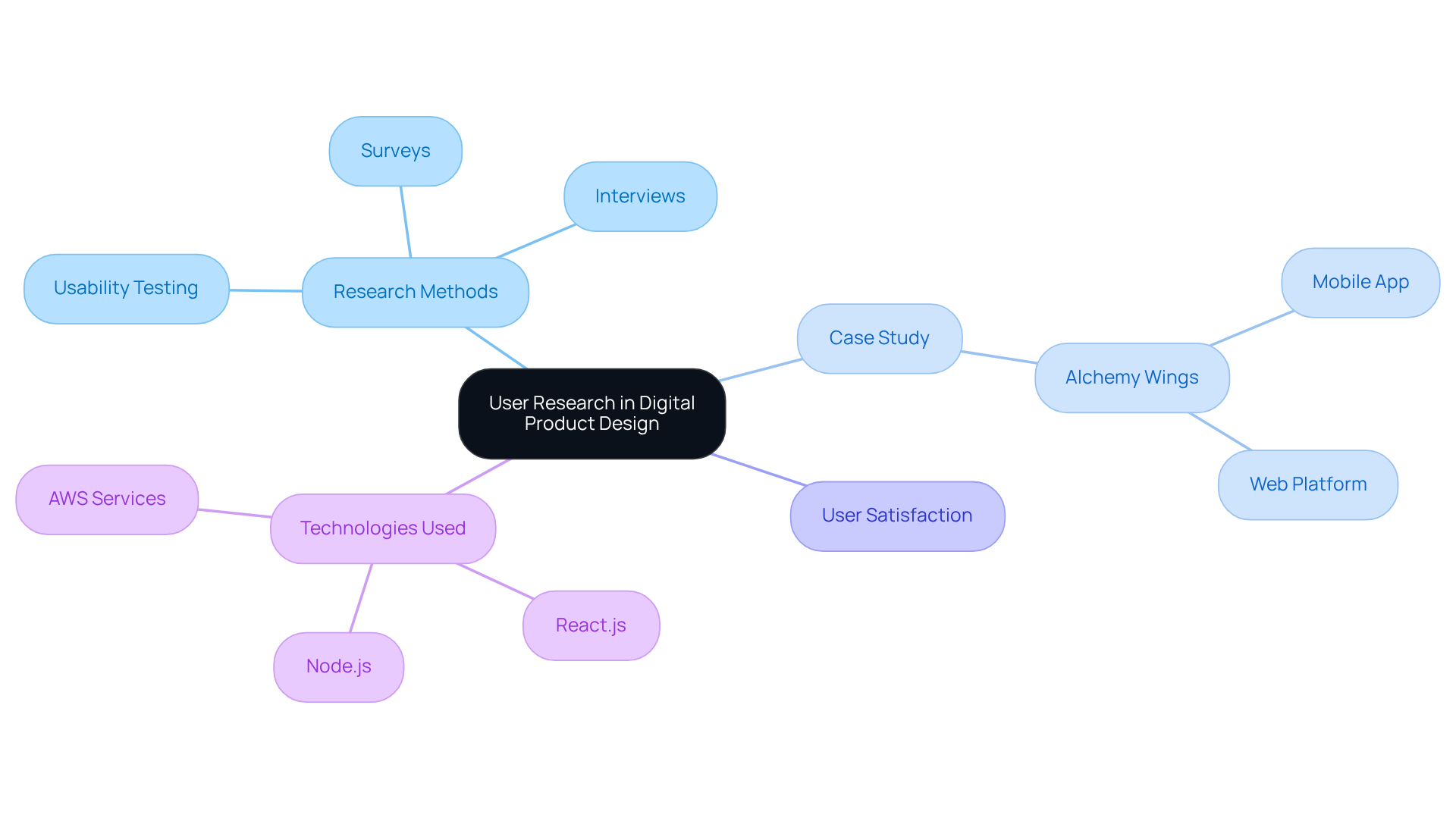
Prototyping: Testing Ideas Before Implementation
Prototyping is an essential step in the design process, allowing teams to create tangible representations of their concepts. By developing low-fidelity prototypes, Studio Graphene can rapidly assess ideas with stakeholders, gather valuable feedback, and make necessary adjustments. This iterative approach not only minimizes the risk of costly changes in later stages of development but also ensures that the final product meets user expectations effectively. Ultimately, embracing prototyping fosters a more user-centered design process, leading to successful outcomes.
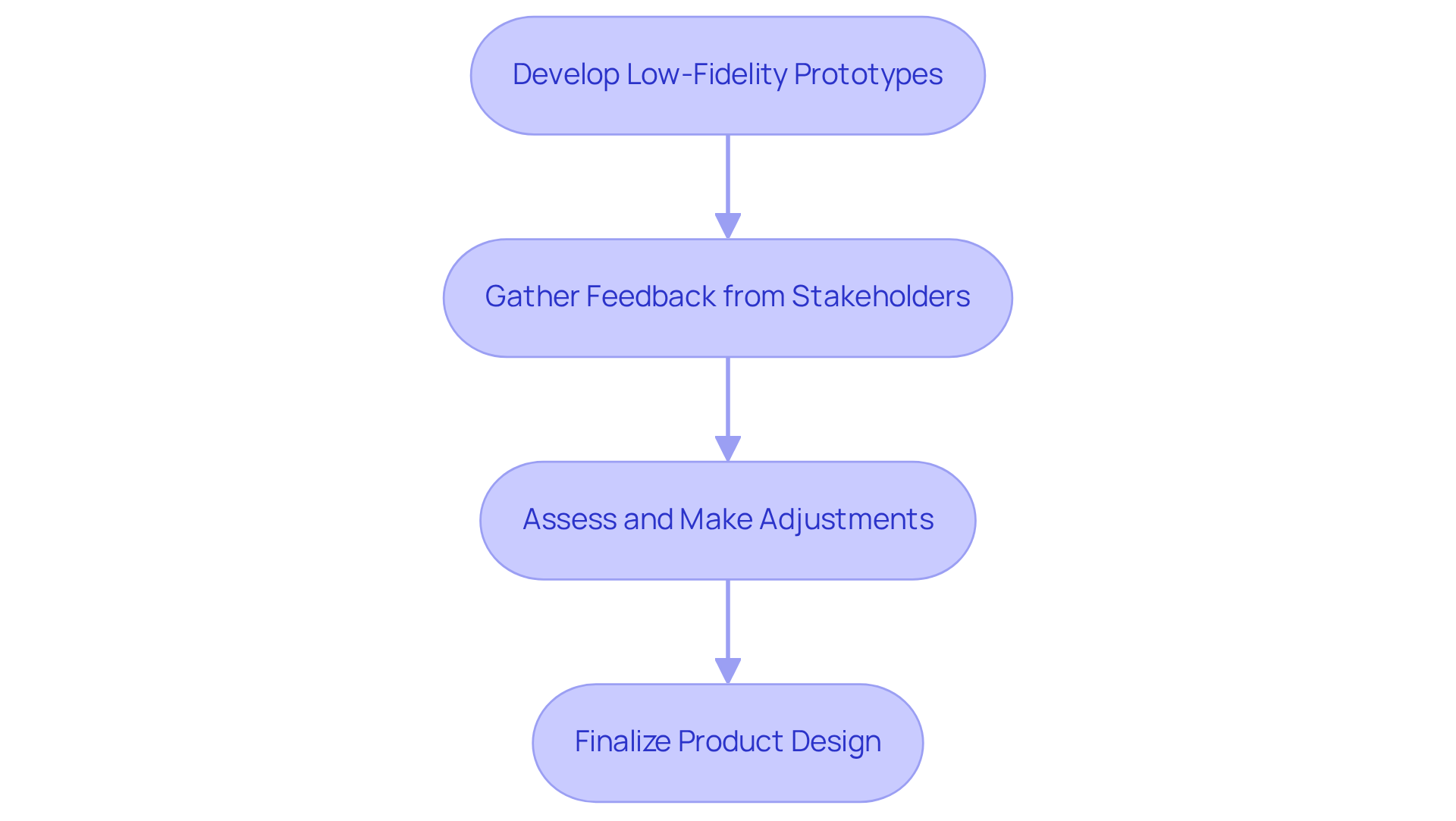
Design Systems: Ensuring Consistency Across Products
Establishing a style system is crucial for achieving uniformity across various aspects of digital product design. Studio Graphene develops comprehensive systems that encompass guidelines for typography, color palettes, and UI components. This organized approach to digital product design not only streamlines the creation process but also strengthens brand identity, facilitating smoother navigation and interaction for users across various platforms.
Research indicates that by 2025, brands utilizing unified visual systems may experience a 30% increase in customer retention, underscoring the significant impact of consistency on client satisfaction (source needed).
Professional insights reveal that maintaining aesthetic consistency in digital product design enhances usability while fostering trust and recognition among users, ultimately driving business growth. As Jakob Nielsen asserts, consistency in layout is vital for usability, as it reduces confusion and learning time for users.
Furthermore, Dan Ritzenthaler emphasizes the importance of customer involvement in the design process, advocating for the collection of client requirements and feedback.
Graphene's B Corp Certification further underscores its commitment to quality and social responsibility in creative practices.
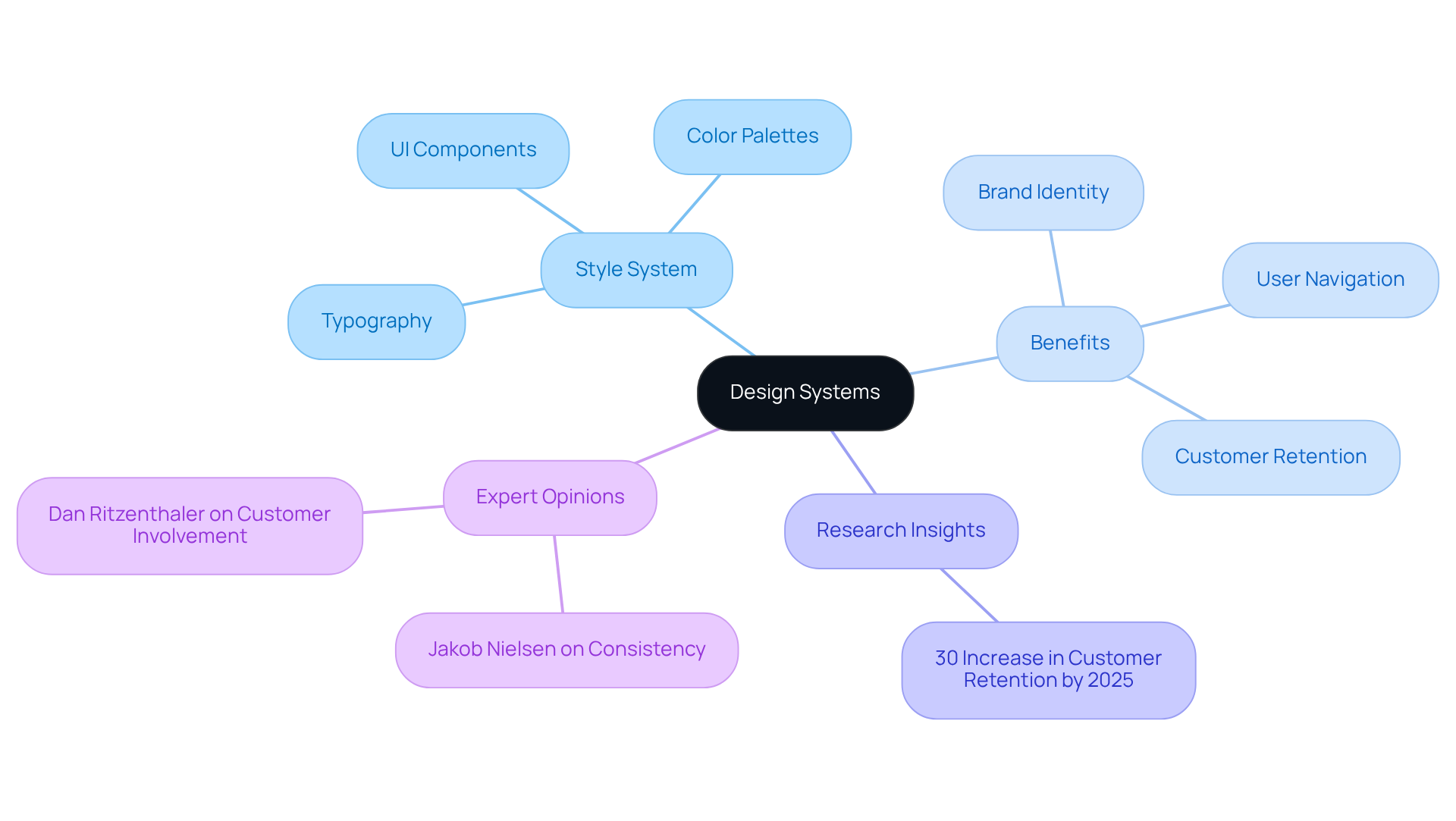
Iteration: Adapting Designs Based on User Feedback
Iteration is a vital element of successful digital product design, involving the ongoing enhancement of creations based on feedback from individuals and testing results. Graphene places a strong emphasis on this iterative process by actively seeking feedback from individuals and stakeholders throughout the development cycle. This dedication to a culture of ongoing enhancement allows the agency to modify creations in real-time, ensuring they correspond closely with client requirements and preferences.
To improve client involvement, Studio Graphene utilizes techniques such as:
- Regular feedback sessions
- Participant testing workshops
- Collaborative creation sprints
These initiatives promote open communication and guarantee that client insights are incorporated into the development process from the outset.
Studies show that each dollar put into experience (UX) produces an astonishing return of $100, amounting to a 9,900% ROI. This emphasizes the financial motivation for businesses to prioritize feedback from consumers in their development processes. Moreover, 88% of individuals are less likely to revisit a site following a negative experience, highlighting the importance of adaptable design that progresses based on insights from visitors.
By utilizing user feedback, Studio Graphene not only enhances the usability of its digital product design offerings but also significantly boosts the chances of success in the competitive digital landscape of 2025. The iterative method encourages innovation and guarantees that the final outcome connects with its target audience, ultimately propelling business growth and operational efficiency.
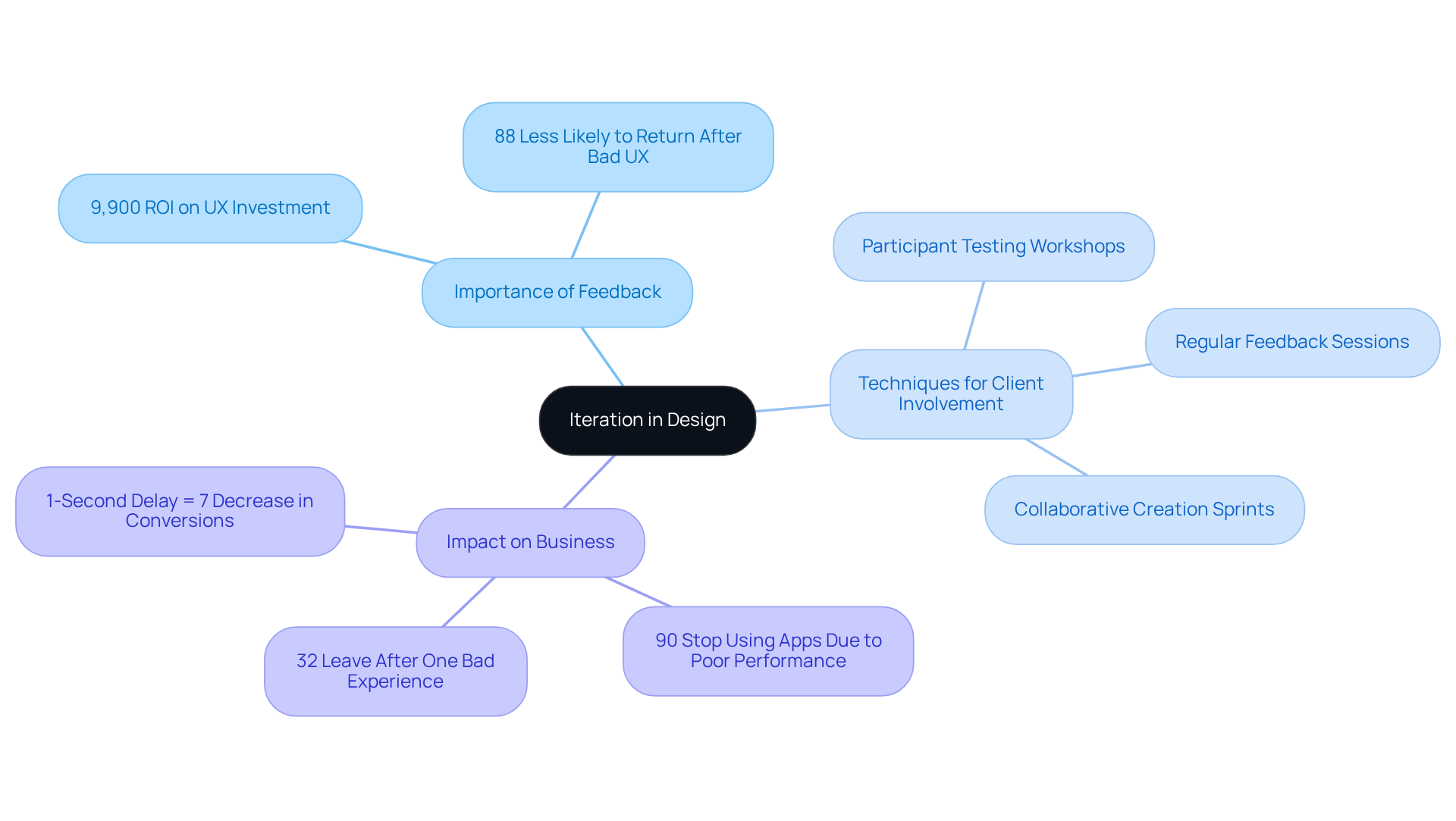
Collaboration: Bridging Teams for Effective Design
Collaboration among cross-functional teams is essential for achieving successful digital design. Studio Graphene cultivates an environment of open communication among designers, developers, and stakeholders, fostering creativity and innovation. This cooperative synergy ensures that every aspect of the offering aligns with both business goals and consumer needs.
For instance, the agency's flexible, human-focused approach allows teams to swiftly create prototypes and refine them based on user feedback. This results in solutions that are not only practical but also resonate with the intended audience.
Notable projects, such as those for Peckwater Brands and Volograms, illustrate how effective teamwork can transform ideas into impactful digital product design solutions. By prioritizing collaboration, Graphene enhances the design process and drives operational efficiency, ultimately contributing to the success of their clients' products.
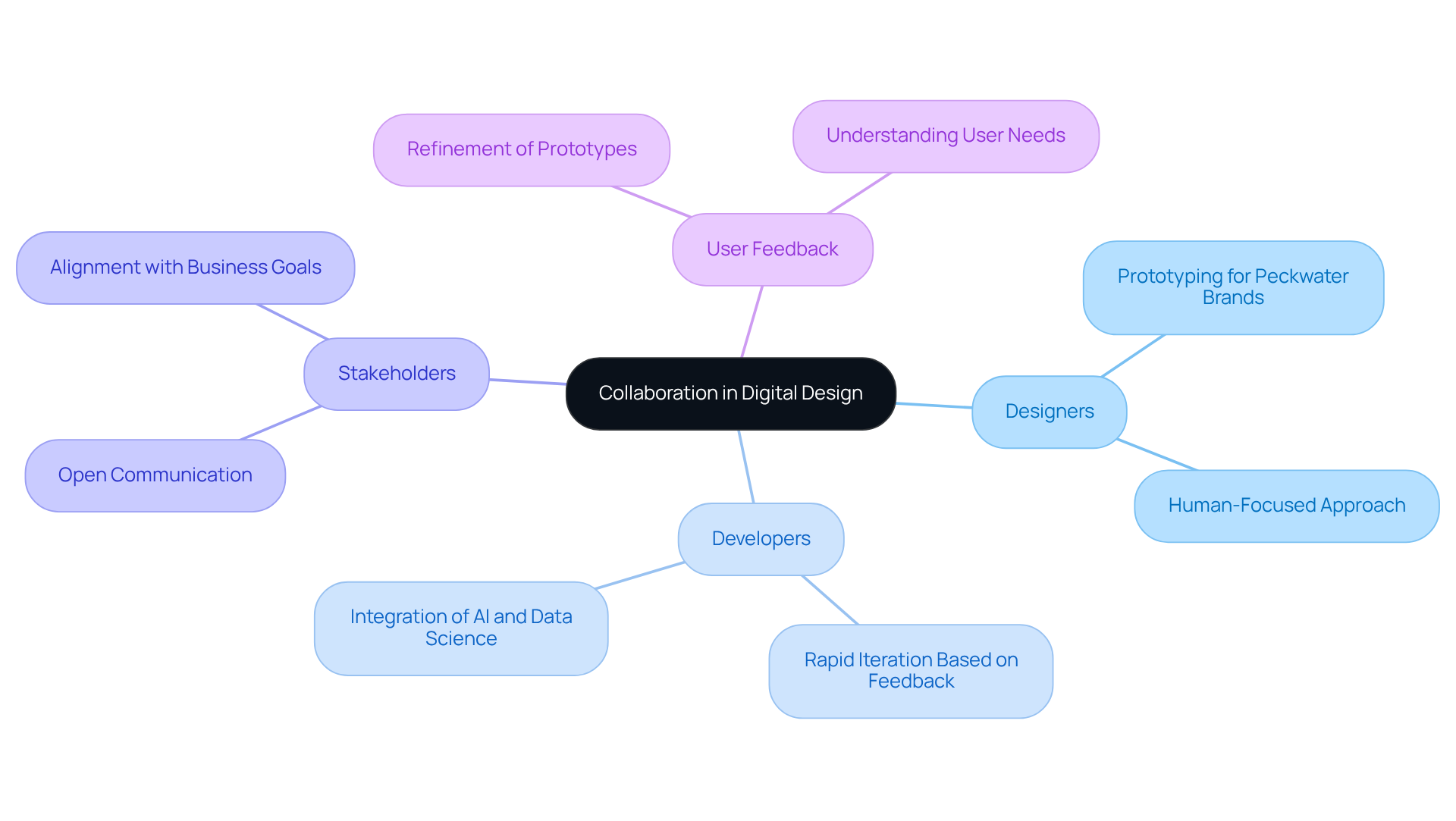
Visual Appeal: Creating Engaging User Interfaces
Designing visually appealing interfaces is essential for attracting attention and enhancing engagement. Studio Graphene prioritizes the development of interfaces that are both aesthetically pleasing and functional. By applying principles such as visual hierarchy, color theory, and typography, the agency creates experiences that resonate with users. Research indicates that a well-designed interface can boost web service conversion rates by as much as 200%, while optimized experiences may lead to increases of up to 400%. Furthermore, 75% of a website's credibility is derived from its aesthetics, underscoring the critical role of visual appeal in fostering trust.
Designers emphasize that an item should not only be attractive but also functional; simplicity often enhances the user experience. The concept of 'joy of use' highlights the necessity for products to be both functional and enjoyable, focusing on thoughtful small touches that enhance usability. Successful examples, such as Airbnb's intuitive booking process, demonstrate how effective arrangements can enable smooth navigation without the need for guidance. Additionally, it is vital to recognize that 16% of the global population has a disability, impacting their access to digital services, which accentuates the need for inclusive design approaches.
Ultimately, the incorporation of careful aesthetic components in digital product design not only boosts engagement but also contributes to the overall success of these offerings. To apply effective design principles, consider conducting usability testing with real users to ensure that your interfaces meet their needs and expectations.
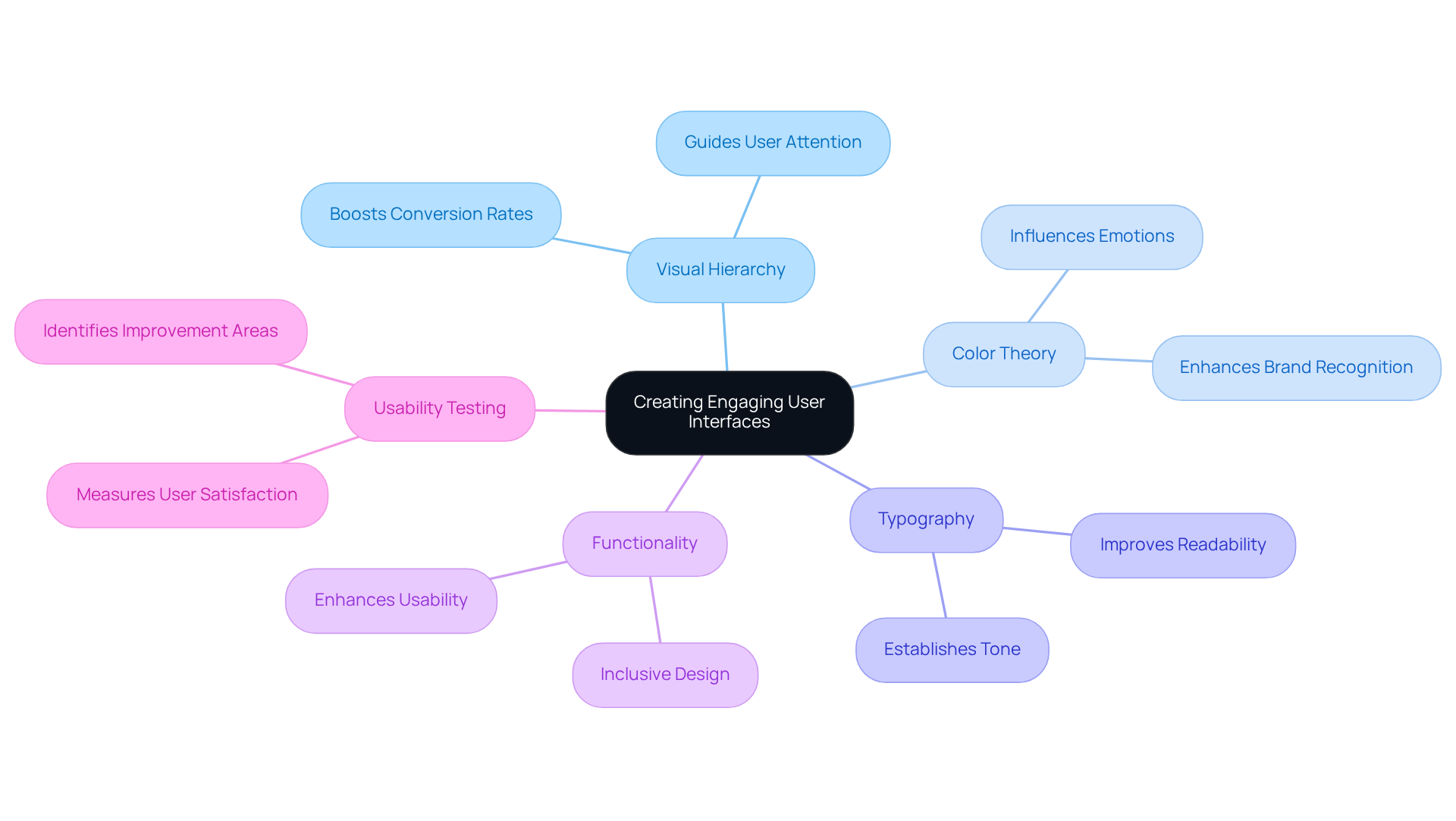
Functionality: Balancing Aesthetics with Performance
While visual appeal is undeniably important, functionality must never be compromised. Studio Graphene underscores the critical need to balance aesthetics with performance, ensuring that items are not only visually striking but also highly functional. This commitment involves thorough testing and optimization, guaranteeing a seamless and efficient user experience. Ultimately, this approach leads to greater satisfaction, reinforcing the value of integrating beauty with practicality.
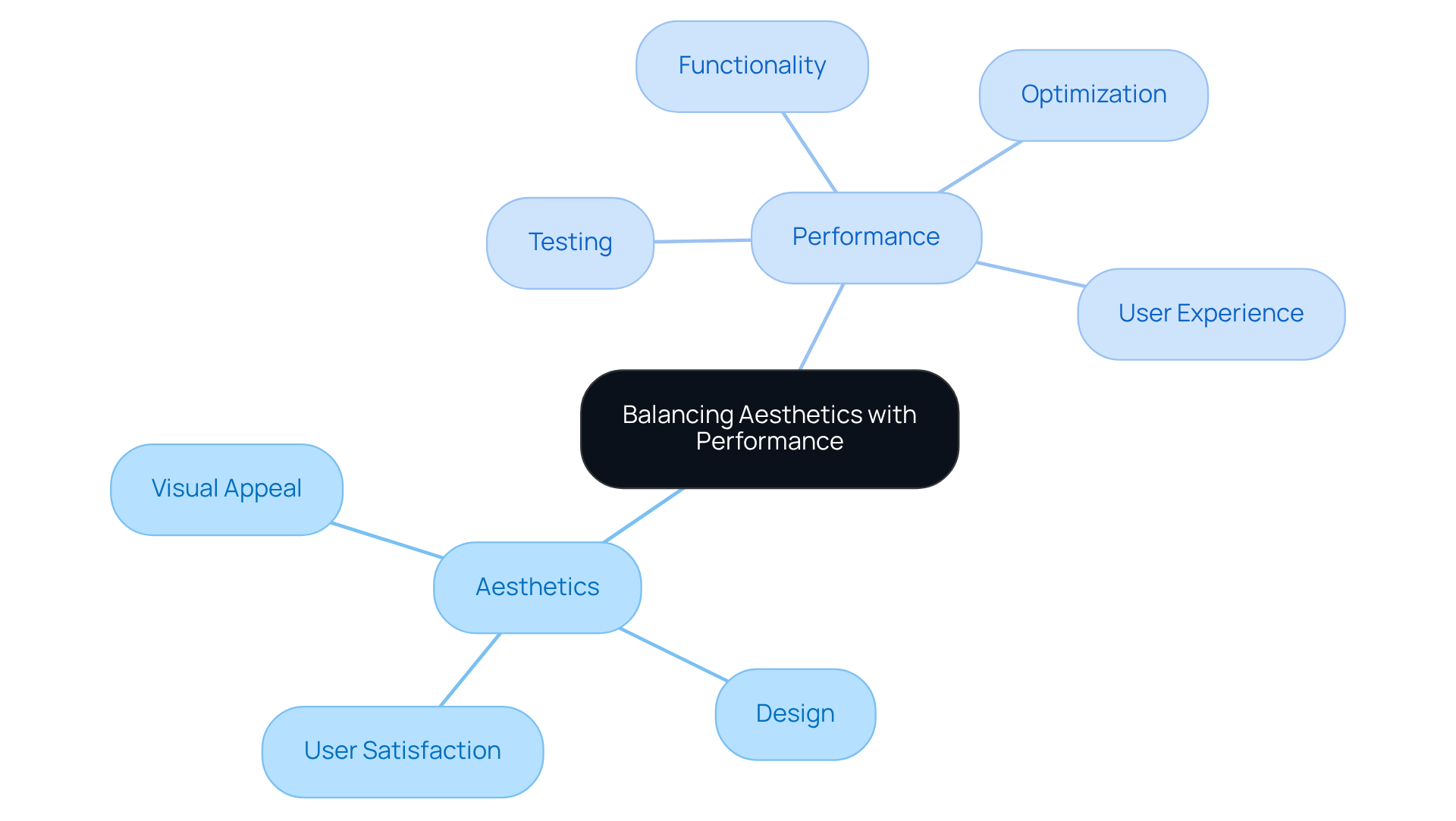
Simplicity: Designing Intuitive User Experiences
Simplicity serves as a cornerstone of effective digital design. Studio Graphene is dedicated to crafting intuitive experiences by eliminating unnecessary complexity and honing in on essential features. By employing clear navigation, straightforward layouts, and concise content, the agency empowers individuals to effortlessly understand and engage with the product. This focus on simplicity not only enhances customer satisfaction but also increases operational efficiency, as evidenced by the unified AI chat application, where over 70% of participants reported improved efficiency and satisfaction. Additionally, the eCommerce platform tailored for the gaming community achieved an impressive 30% increase in customer satisfaction, underscoring the effectiveness of an intuitive layout.
In 2025, the importance of intuitive aesthetics cannot be overstated; brands that prioritize clarity and ease of use are positioned to thrive in a competitive landscape. Industry leaders assert that simplicity is not merely a creative choice but a strategic advantage that fosters trust and loyalty among consumers. As Derick Carlson aptly states, "Simplicity isn't just a choice for aesthetics; it’s a winning strategy." To cultivate intuitive experiences, strategies such as:
- Wireframing to visualize flow
- Optimizing button layout for accessibility
- Ensuring consistency across interfaces
are crucial in digital product design. These principles ensure that individuals can navigate offerings with ease, ultimately leading to a more satisfying interaction.
Furthermore, it is vital to recognize that companies forfeit approximately 35% of sales due to inadequate client experiences, highlighting the financial repercussions of neglecting intuitive design. Accessibility plays a critical role in this process, ensuring that all individuals, including those with disabilities, can effectively engage with digital offerings.
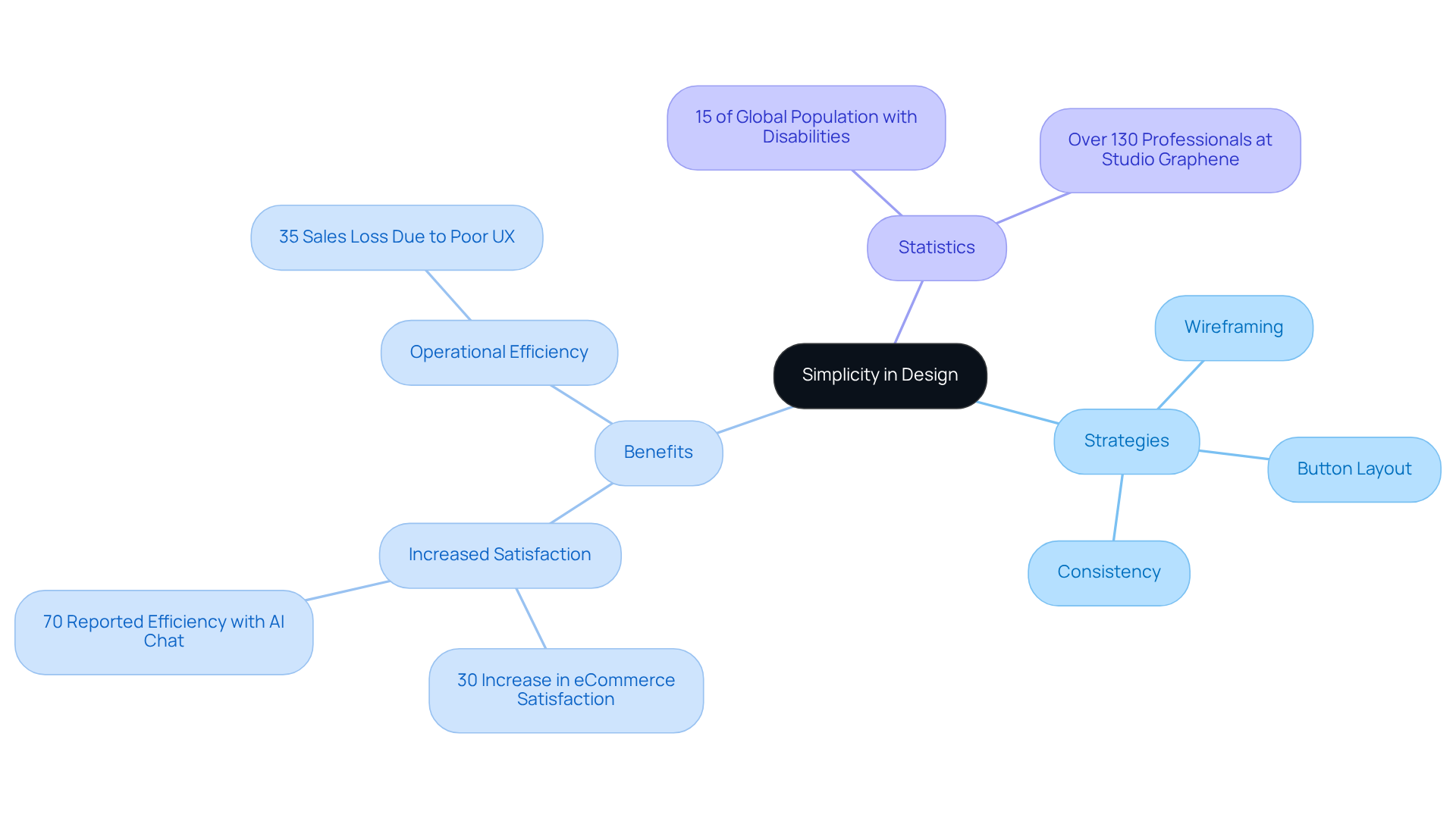
Metrics: Tracking Success in Digital Product Design
Effective monitoring of metrics is essential for evaluating the success of digital offerings. Studio Graphene employs a range of sophisticated analytics tools to observe individual behavior, engagement levels, and overall performance of its offerings. This data-driven approach enables the agency to pinpoint specific areas for improvement, fostering informed decision-making that significantly enhances effectiveness and client satisfaction. Notably, Coty's transformation in offering innovation through the integration of Revuze illustrates how real-time consumer insights can lead to more relevant products and faster market responses.
Revuze aids Coty in identifying consumer preferences and sentiment analysis, showcasing the power of analytics in aligning features with the genuine needs of individuals. By incorporating analytics into their workflow, Graphene not only improves digital product design outcomes but also ensures that product features resonate with actual user needs, resulting in a more impactful digital experience.
Furthermore, Studio Graphene's B Corp Certification highlights its commitment to social and environmental performance, adding depth to its analytics capabilities.

Conclusion
Emphasizing the significance of effective digital product design, this article delineates ten key strategies that can markedly enhance the design process and outcomes. By leveraging agile methodologies, conducting thorough user research, engaging in prototyping, establishing design systems, and embracing iterative feedback, organizations can create products that not only meet user expectations but also drive business success.
Key insights from the discussion underscore the value of comprehending audience needs through comprehensive research, the necessity of prototyping to test ideas prior to implementation, and the importance of collaboration among cross-functional teams. Furthermore, maintaining a balance between visual appeal and functionality, while prioritizing simplicity in user experiences, emerges as crucial for fostering engagement and satisfaction. Metrics play a vital role in tracking success and guiding improvements, ensuring that products resonate with users and adapt to their preferences.
Ultimately, embracing these strategies can lead to transformative results in digital product design. By prioritizing user-centric approaches and cultivating a culture of continuous improvement, organizations are better positioned to thrive in the competitive landscape of 2025. The commitment to these principles will not only enhance product quality but also strengthen client relationships, paving the way for sustained success in the digital realm.




